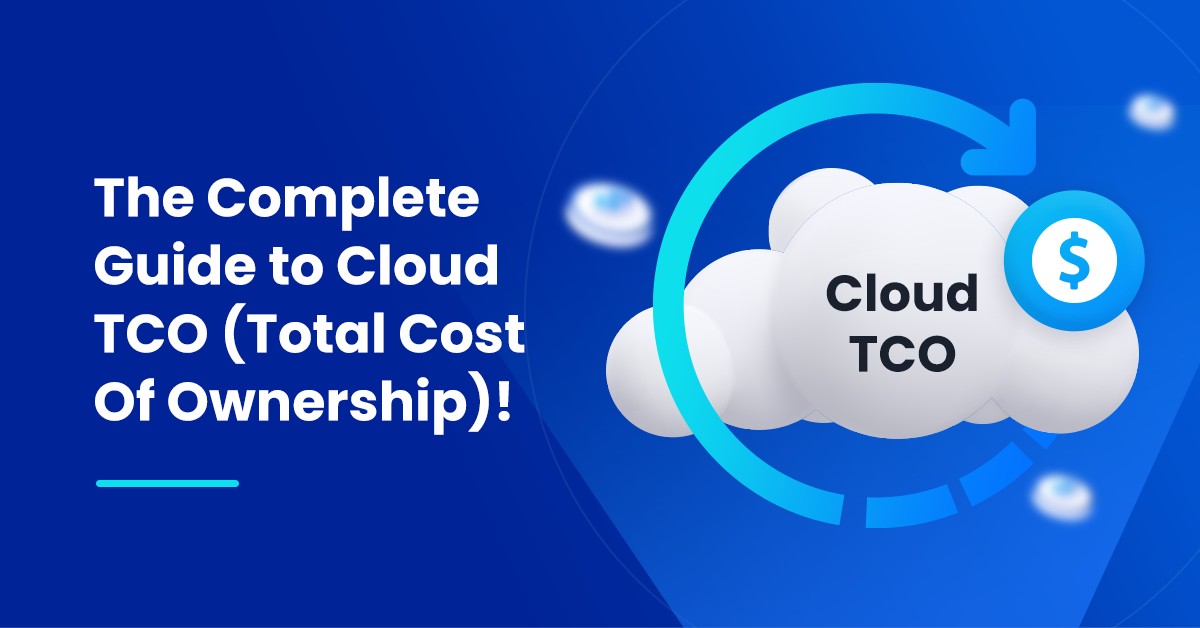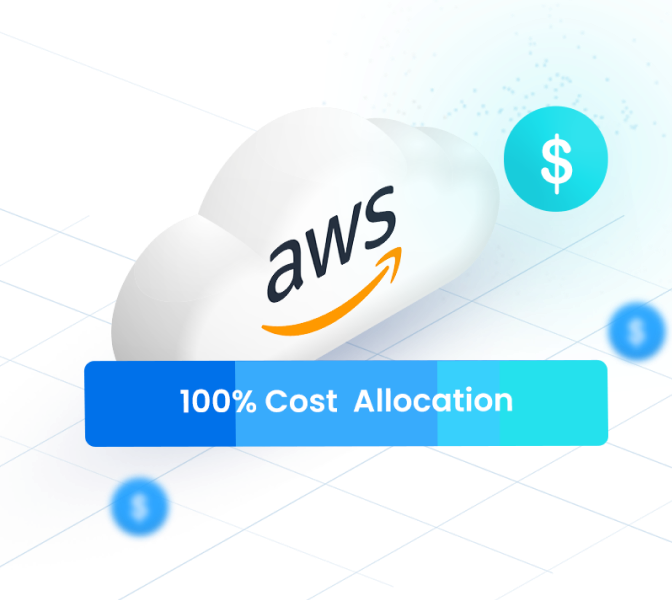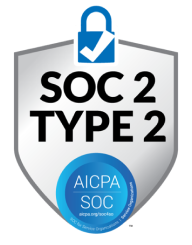Costs are one of the major reasons organizations transition from on-premise infrastructure to the cloud, apart from high availability and scalability. But it’s essential to understand the total costs of ownership of the cloud to estimate the return on investment that it can provide.
Cloud TCO can assess costs related to the cloud before you make any major decisions, like selecting a cloud service provider or deciding which applications should be migrated to the cloud.
In this article, we take a deep dive into cloud TCO and how it can help businesses make better financial decisions.
What is Cloud TCO (Total Cost Of Ownership)?
Cloud total cost of ownership (TCO) is a metric that defines the total costs that your business will incur for managing workloads in the cloud over its entire lifetime. In other words, it quantifies and measures the cloud adoption success costs associated with migrating, provisioning, and operating the cloud infrastructure.
With a cloud TCO analysis, you can determine the cost-effectiveness of moving to the cloud compared to on-premise infrastructure.
But it’s important to note that a cloud TCO is a model which has to be modified according to the different factors and attributes that directly affect your cloud infrastructure. Since every organization has a different approach to cloud migration and adoption, their cloud TCO model will also differ.
What Are The Factors That Affect Cloud TCO?
While several factors can affect cloud TCO, here are the major ones:
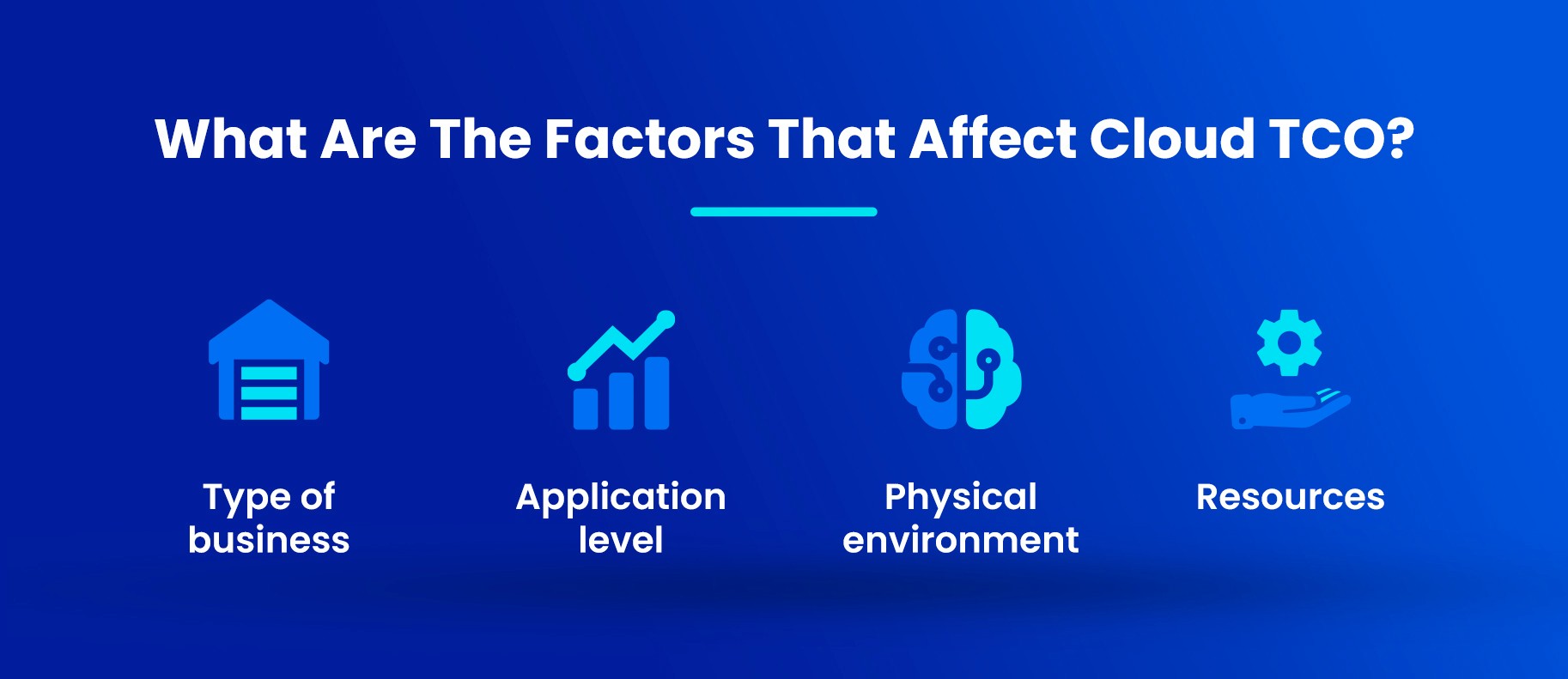
- Type of business: Enterprises and large organizations with more complex migrations and workloads incur higher cloud usage and customization costs than SMBs, directly affecting cloud TCO.
- Application level: On-premise applications might need re-coding or revisions in order to run effectively on the cloud, and depending on how many changes are needed, TCO can increase.
- Physical environment: The overall physical infrastructure of the cloud service provider you choose can also affect TCO. For instance, if the data center locations are distant, the total data transfer costs can increase.
- Resources: Your cloud TCO also depends on the type of cloud resources you will be utilizing. For instance, the costs for using AWS spot instances would be different from reserved instances.
How to Calculate TCO (Total Cost Of Ownership)?
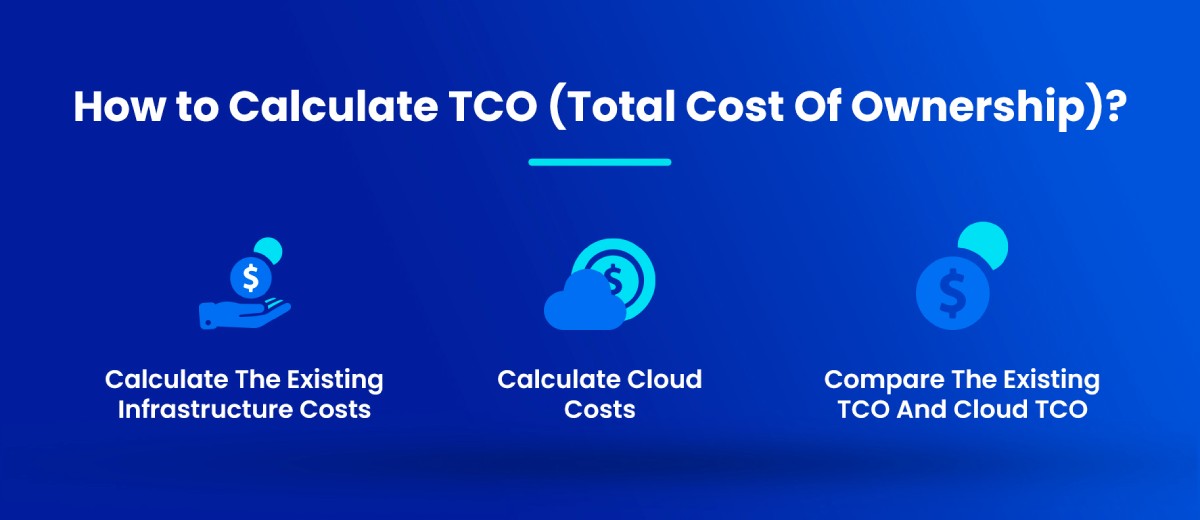
1. Calculate The Existing Infrastructure Costs
By calculating the total cost of your existing infrastructure, you get a comparison point that will help you better analyze the cloud TCO costs.
Infrastructure costs usually include tangible costs that are easy to identify and calculate. Here are the key components of infrastructure costs, although the exact components will differ according to your cloud infrastructure:
- Equipment and supplies costs
- Maintenance and upgrade costs
- Subscriptions and licenses for the software used in on-premise infrastructure
- Software upgrade costs
- Data security solutions costs
- Disaster recovery system costs
While these were just tangible costs, it’s just as important to look into hidden costs that may otherwise not be directly seen or identified when calculating your cloud TCO. These hidden costs can include:
- Downtime: It can cause sudden disruptions in your services, leading to business losses. At the same time, you should also consider the costs of fixing these downtimes.
- Slow speeds: With slow speeds, accessing applications can become challenging, which can significantly impact employee productivity and efficiency.
2. Calculate Cloud Costs
The next step is to calculate the cost of operating your business infrastructure on the cloud. When businesses move from on-premises to the cloud, they directly assume that their cloud bills will be a lot more cost-effective. And while the cloud can definitely help save more than on-premises, it all depends on how you plan and execute your cloud infrastructure. The on-demand billing nature of the cloud means that your costs can quickly drive up if you are not careful.
Here are the main cloud costs that you should consider when calculating the cloud TCO:
- Migration Costs
Migration is the process of moving your on-premises data, applications, and workloads to the cloud. Apart from the data transfer costs, you also need to consider the costs associated with modifying or modernizing your applications to ensure they can work seamlessly on the cloud.Depending on the current state of your applications and your selected cloud service provider, you may have to revise parts of the applications or rebuild some from the ground up to optimize them for the cloud, which will further add to your migration costs.
- Monthly Cloud Costs
The monthly cloud costs will depend on your cloud service provider, workloads, cloud services you use, and how you utilize cloud features.
The different types of monthly cloud costs you should consider, include network services, storage services, and compute services.
Cloud service providers like AWS offer numerous cost-saving ways to cut down on cloud costs, like reserved instances, savings plans, and spot instances.
By carefully planning and optimizing your cloud operations with the right tools, it’s possible to save up on the total monthly cloud costs and decrease the cloud TCO.
AWS Cloud Cost Allocation: The Complete Guide
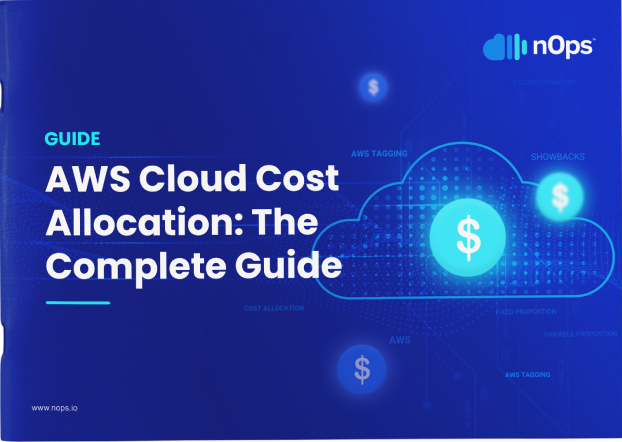
3. Compare The Existing TCO And Cloud TCO
With the TCO calculations done, it’s now time to compare on-premises versus cloud costs to better understand which one of the two will be more beneficial for your businesses from a financial standpoint.
With flexible pay-as-you-go pricing models and significantly low upfront costs, most cloud service providers offer low cloud TCO, making it easier and cost-effective for businesses to migrate to the cloud.
But at the same time, it’s also important to remember that TCO only focuses on costs.
Businesses need to focus on the value of those cost savings. By migrating to the cloud, you get cost savings through utilization, standardization, and automation.
Cloud enables businesses to leverage agile practices and pivot quickly whenever needed, directly leading to shorter time-to-market and improved efficiency. The high availability and scalability offered by the cloud allow businesses to provide uninterrupted services while conveniently scaling up or down depending on their current business needs.
Effectively Lower Cloud TCO (Total Cost Of Ownership) with nOps!
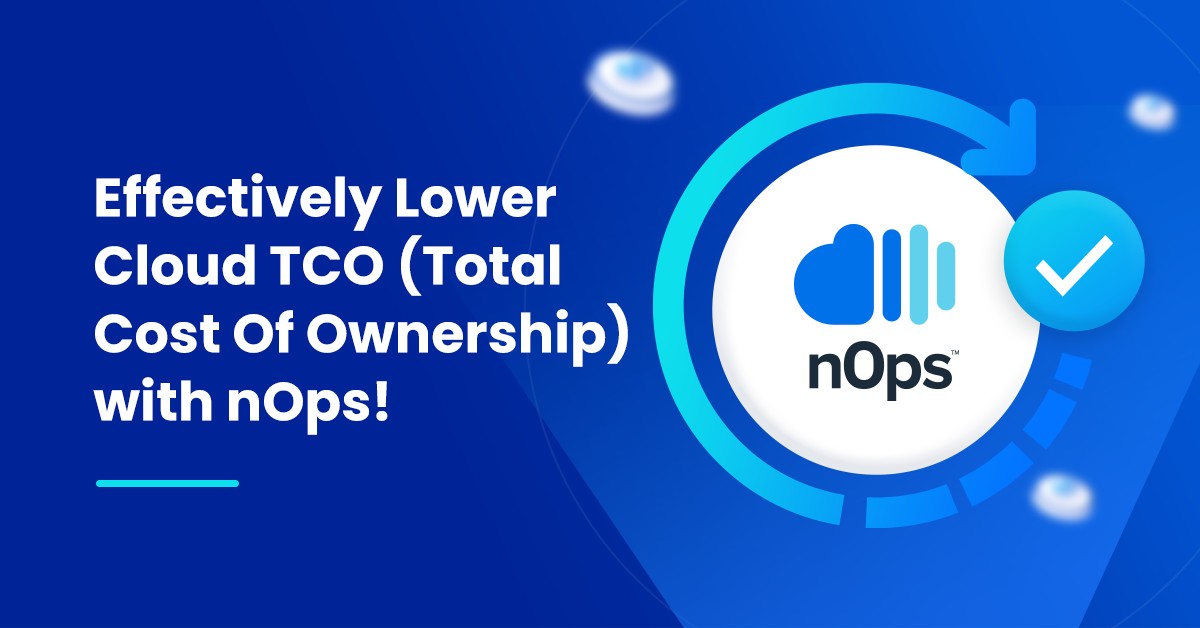
With the right cloud service provider and cost strategy, it’s possible to lower cloud costs effectively. You can leverage a fully automated cloud cost management platform like nOps to further decrease your TCO and total AWS costs by over 50% – on autopilot.
nOps’s Hourly Granularity feature makes cloud cost analysis of AWS data seamless and provides improved cost allocation, visibility, and predictive analytics. It allows you to forecast cloud spending with greater accuracy, minimizing waste and decreasing TCO.
Hourly Granularity works by observing hourly costs of resources in real-time and gives you a more comprehensive visibility into your cloud costs. By detecting hourly usage cycles of resources, you can make informed decisions about when to start or stop resources.
Closely following the insights generated by Hourly Granularity allows you to calculate cloud TCO more effectively and reduce your overall cloud costs. This ensures your cloud bills always align with your total budgets.
With nOps as part of your cloud management and optimization strategy, you get to:
- Pay less for what you use
- Use fewer resources by pausing idle resources automatically
Let us help you save! Sign up for nOps today.
.png?width=1920&height=1080&name=Landscape%20(4).png)

